
Ken Kalesnikoff & David Eby
BC Wood announced that Premier David Eby will open the 22nd Annual Global Buyers Mission (GBM) and deliver the welcoming remarks on Friday, September 5th, before the tradeshow begins. This shows the significance of the GBM to British Columbia’s forestry and value-added wood industry, with the Premier joining us to explore the tradeshow floor and engage directly with the delegates. Premier Eby’s presence highlights the critical role of BC’s wood and forestry sector in driving innovation, sustainability, and economic growth. As one of the largest events of its kind in Canada, the GBM brings together over 700 delegates from around the globe, fostering connections that generated over $34 million in new business last year alone. For 22 years, the GBM has been a staple for generating business for Canada’s wood manufacturers. This showcases to international delegates, Canada’s wood manufacturing capabilities as some of the finest in the world.


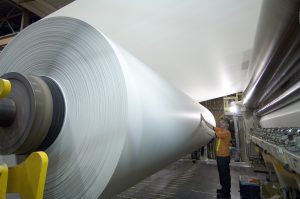 As of mid-2025, the global tariff environment has grown increasingly unpredictable. The United States has reinforced its protectionist stance with new and expanded duties aimed at key trade partners. Most notably, a 50% tariff on imports from Brazil was enacted, targeting a wide range of products. Wood pulp and certain industrial inputs were explicitly exempted, though lingering confusion around the policy’s scope has led companies to reassess sourcing strategies. …Many of the early US tariffs implemented—such as those targeting Canadian softwood lumber, Chinese finished goods, and EU paperboard products—remain in place. …In response to this complex tariff environment, companies are increasingly focusing on supplier diversification, regional trade agreements, and nearshoring strategies to reduce risk. While some nations—like Mexico and Chile—have emerged as viable alternatives for sourcing pulp, packaging, and paper products, the reshuffling of trade lanes is still underway.
As of mid-2025, the global tariff environment has grown increasingly unpredictable. The United States has reinforced its protectionist stance with new and expanded duties aimed at key trade partners. Most notably, a 50% tariff on imports from Brazil was enacted, targeting a wide range of products. Wood pulp and certain industrial inputs were explicitly exempted, though lingering confusion around the policy’s scope has led companies to reassess sourcing strategies. …Many of the early US tariffs implemented—such as those targeting Canadian softwood lumber, Chinese finished goods, and EU paperboard products—remain in place. …In response to this complex tariff environment, companies are increasingly focusing on supplier diversification, regional trade agreements, and nearshoring strategies to reduce risk. While some nations—like Mexico and Chile—have emerged as viable alternatives for sourcing pulp, packaging, and paper products, the reshuffling of trade lanes is still underway. 
 VANCOUVER, BC —
VANCOUVER, BC —  NEW YORK, NY -‑ Mercer International reported second quarter 2025. In the second quarter of 2025, net loss was $86.1 million compared to $67.6 million in the same quarter of 2024 and $22.3 million in the first quarter of 2025. Mr. Juan Carlos Bueno, Chief Executive Officer, stated: “Our operating results for the second quarter of 2025 reflect the impacts of ongoing uncertainties in the global trade environment coupled with the resulting weaker dollar. This challenging backdrop contributed to weaker demand for pulp in China during the quarter. …Our lumber sales realizations in both the U.S. and Europe increased in the second quarter of 2025 as a result of lower supply and steady demand.
NEW YORK, NY -‑ Mercer International reported second quarter 2025. In the second quarter of 2025, net loss was $86.1 million compared to $67.6 million in the same quarter of 2024 and $22.3 million in the first quarter of 2025. Mr. Juan Carlos Bueno, Chief Executive Officer, stated: “Our operating results for the second quarter of 2025 reflect the impacts of ongoing uncertainties in the global trade environment coupled with the resulting weaker dollar. This challenging backdrop contributed to weaker demand for pulp in China during the quarter. …Our lumber sales realizations in both the U.S. and Europe increased in the second quarter of 2025 as a result of lower supply and steady demand.
 US and Chinese negotiators have agreed in principle to push back the deadline for escalating tariffs, although America’s representatives said any extension would need Donald Trump’s approval. Officials from both sides said after two days of talks in Stockholm that while had failed to find a resolution across the many areas of dispute they had agreed to extend a pause due to run out on 12 August. Beijing’s top trade negotiator, Li Chenggang, said the extension of a truce struck in mid-May would allow for further talks, without specifying when and for how long the latest pause would run. However, the US trade representative Jamieson Greer stressed that President Trump would have the “final call” on any extension. …Trump is on course to impose extra tariffs on Mexico and Canada from Friday, barring last-minute deals.
US and Chinese negotiators have agreed in principle to push back the deadline for escalating tariffs, although America’s representatives said any extension would need Donald Trump’s approval. Officials from both sides said after two days of talks in Stockholm that while had failed to find a resolution across the many areas of dispute they had agreed to extend a pause due to run out on 12 August. Beijing’s top trade negotiator, Li Chenggang, said the extension of a truce struck in mid-May would allow for further talks, without specifying when and for how long the latest pause would run. However, the US trade representative Jamieson Greer stressed that President Trump would have the “final call” on any extension. …Trump is on course to impose extra tariffs on Mexico and Canada from Friday, barring last-minute deals.
 Japan’s housing starts fell 15.6% year-on-year in June 2025, slightly better than market expectations of a 15.8% drop and easing from May’s sharp 34.4% plunge—the steepest since September 2009. This marked the third consecutive monthly decline but the mildest in the sequence, as contractions slowed across key categories: owned (-16.4% vs -30.9%), rented (-14.0% vs -30.5%), built-for-sale (-17.9% vs -43.8%), and two-by-four homes (-5.7% vs -26.4%). On the other hand, prefabricated housing starts declined slightly more (-9.6% vs -9.3%), while growth in issued units moderated sharply to 10.2% from 76.7% in May.
Japan’s housing starts fell 15.6% year-on-year in June 2025, slightly better than market expectations of a 15.8% drop and easing from May’s sharp 34.4% plunge—the steepest since September 2009. This marked the third consecutive monthly decline but the mildest in the sequence, as contractions slowed across key categories: owned (-16.4% vs -30.9%), rented (-14.0% vs -30.5%), built-for-sale (-17.9% vs -43.8%), and two-by-four homes (-5.7% vs -26.4%). On the other hand, prefabricated housing starts declined slightly more (-9.6% vs -9.3%), while growth in issued units moderated sharply to 10.2% from 76.7% in May. The European Federation of Wooden Pallet and Packaging Manufacturers (FEFPEB) has advised that the EU Deforestation Regulation (EUDR) will not have significant implications for customers using wood pallets and packaging for transport. The organization
The European Federation of Wooden Pallet and Packaging Manufacturers (FEFPEB) has advised that the EU Deforestation Regulation (EUDR) will not have significant implications for customers using wood pallets and packaging for transport. The organization  AUCKLAND, New Zealand — Consent has been granted for construction to begin on a $100 million development on Auckland’s Karangahape Rd that will have retail and office spaces. The 11-storey timber building will be located minutes from the new Karanga-a-Hape Station which is part of the City Rail Link*. Developers James Kirkpatrick Group (JKG) are planning to begin construction in early 2027 after reaching an agreement with Auckland Council. JKG managing director James Kirkpatrick said “This development will create a new benchmark for sustainable urban design and construction in New Zealand and will enable the city to realise the full social and economic potential of the City Rail Link. The building is designed by globally renowned local architects Fearon Hay and is targeting a world-leading 6 Green Star sustainability rating.
AUCKLAND, New Zealand — Consent has been granted for construction to begin on a $100 million development on Auckland’s Karangahape Rd that will have retail and office spaces. The 11-storey timber building will be located minutes from the new Karanga-a-Hape Station which is part of the City Rail Link*. Developers James Kirkpatrick Group (JKG) are planning to begin construction in early 2027 after reaching an agreement with Auckland Council. JKG managing director James Kirkpatrick said “This development will create a new benchmark for sustainable urban design and construction in New Zealand and will enable the city to realise the full social and economic potential of the City Rail Link. The building is designed by globally renowned local architects Fearon Hay and is targeting a world-leading 6 Green Star sustainability rating.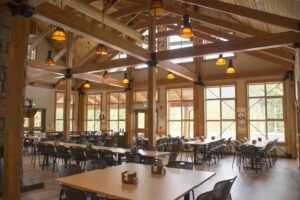 Decarbonizing the economy requires a large-scale transition from fossil carbon-containing feedstocks to minerals and biomass, notably wood in buildings. Increasing harvesting is under discussion to meet the supply of wood for ‘timber cities’, with potentially negative impacts on forests and biodiversity. Here we investigate pathways to timber cities, including their impacts on land use, energy use and greenhouse gas emissions by quantifying global and regional wood cycles using Bayesian material flow analysis. We show that shifting wood fuel to industrial use and maximizing circular use of wood can make timber cities possible with the current harvest volume. Our results reveal that these pathways have better environmental performance than increased harvesting, reducing total CO2 equivalent emissions by 2100 by 40.8 Gt compared to business as usual. To achieve the wood transition, regional and cross-sectoral governance and planning are needed, addressing national-level pathways and inter-regional wood transport.
Decarbonizing the economy requires a large-scale transition from fossil carbon-containing feedstocks to minerals and biomass, notably wood in buildings. Increasing harvesting is under discussion to meet the supply of wood for ‘timber cities’, with potentially negative impacts on forests and biodiversity. Here we investigate pathways to timber cities, including their impacts on land use, energy use and greenhouse gas emissions by quantifying global and regional wood cycles using Bayesian material flow analysis. We show that shifting wood fuel to industrial use and maximizing circular use of wood can make timber cities possible with the current harvest volume. Our results reveal that these pathways have better environmental performance than increased harvesting, reducing total CO2 equivalent emissions by 2100 by 40.8 Gt compared to business as usual. To achieve the wood transition, regional and cross-sectoral governance and planning are needed, addressing national-level pathways and inter-regional wood transport. 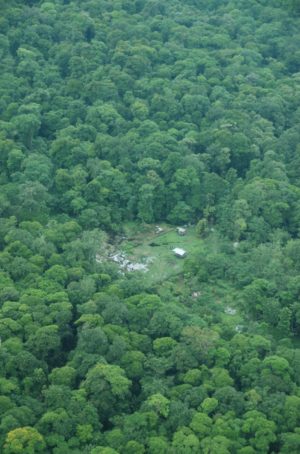 JAKARTA, Indonesia — The recreational vehicle industry is now the biggest consumer of tropical wood in the United States, UK-based NGO Earthsight and Indonesian NGO Auriga Nusantara said. They said evidence showed sheets of tropical “lauan” plywood found in Indonesia were likely being used in the floors, walls and ceilings of RVs produced by major brands like Jayco, Winnebago and Forest River. “Nature-loving RV owners will be horrified,” said Earthsight director Sam Lawson. …Indonesia has one of the world’s highest rates of deforestation linked to mining, farming and logging, and is accused of allowing firms to operate in Borneo with little oversight. …PT Kayu Lapis Asli Murni, sourced timber mostly from rainforest in areas the NGOs visited, half of which was then exported to US firms MJB Wood and Tumac Lumber in 2024, they said.
JAKARTA, Indonesia — The recreational vehicle industry is now the biggest consumer of tropical wood in the United States, UK-based NGO Earthsight and Indonesian NGO Auriga Nusantara said. They said evidence showed sheets of tropical “lauan” plywood found in Indonesia were likely being used in the floors, walls and ceilings of RVs produced by major brands like Jayco, Winnebago and Forest River. “Nature-loving RV owners will be horrified,” said Earthsight director Sam Lawson. …Indonesia has one of the world’s highest rates of deforestation linked to mining, farming and logging, and is accused of allowing firms to operate in Borneo with little oversight. …PT Kayu Lapis Asli Murni, sourced timber mostly from rainforest in areas the NGOs visited, half of which was then exported to US firms MJB Wood and Tumac Lumber in 2024, they said.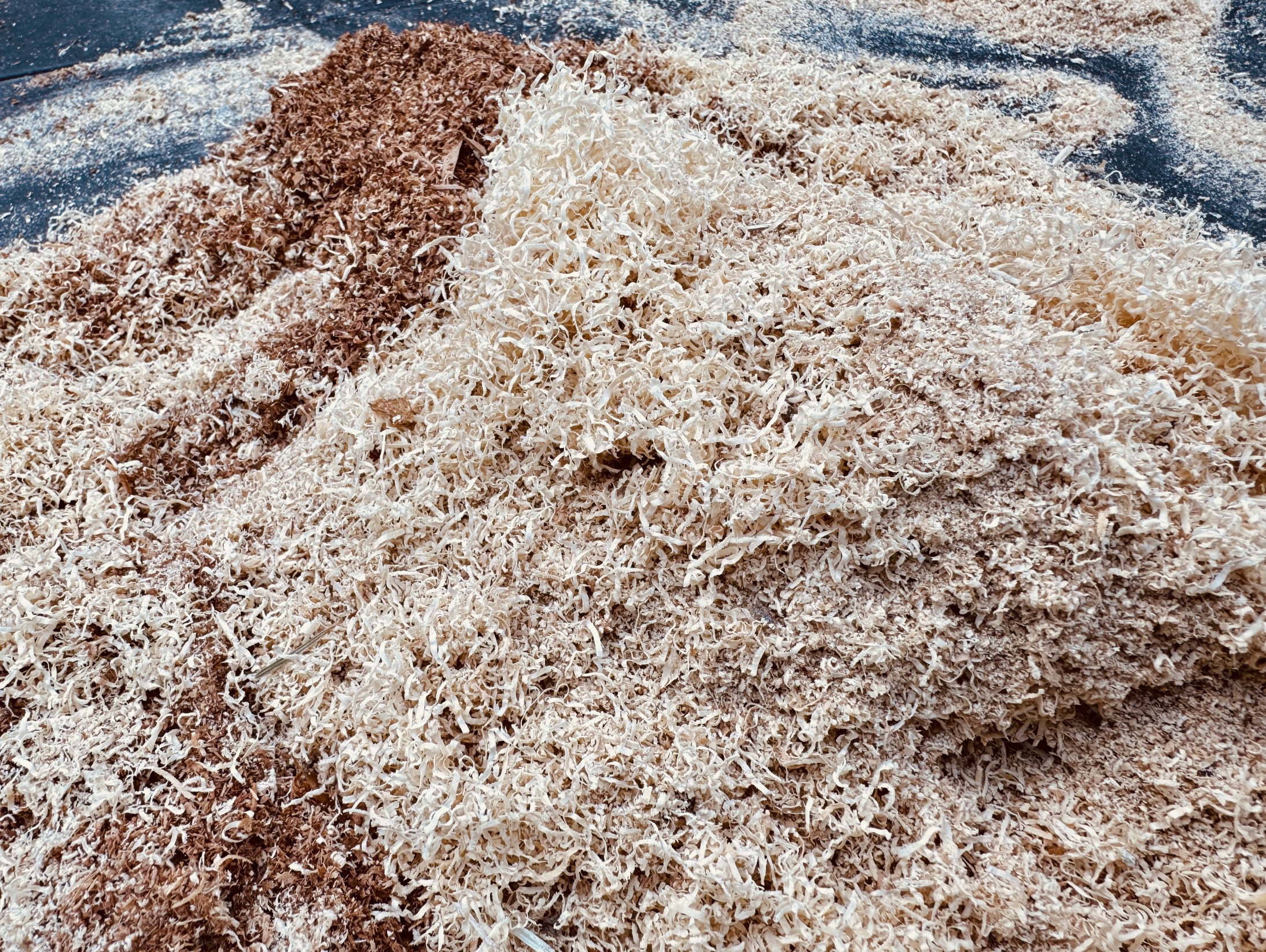 The Forest Stewardship Council has allowed Asia Pulp & Paper — “one of the world’s most destructive forestry companies” — to resume its remedy process toward regaining certification it lost in 2007 for deforestation and land conflicts. Watchdog groups say the decision is premature because a legal review of APP’s links to Paper Excellence/Domtar, the biggest pulp and paper company in North America, is still unfinished. Critics warn the move could erode trust, enable greenwashing, and expose communities in conflict with APP-linked companies to further harm. NGOs are calling for the remedy process to be paused until the review is completed and for full transparency on corporate ownership and compliance.
The Forest Stewardship Council has allowed Asia Pulp & Paper — “one of the world’s most destructive forestry companies” — to resume its remedy process toward regaining certification it lost in 2007 for deforestation and land conflicts. Watchdog groups say the decision is premature because a legal review of APP’s links to Paper Excellence/Domtar, the biggest pulp and paper company in North America, is still unfinished. Critics warn the move could erode trust, enable greenwashing, and expose communities in conflict with APP-linked companies to further harm. NGOs are calling for the remedy process to be paused until the review is completed and for full transparency on corporate ownership and compliance. AUSTRALIA — The Victorian Government has
AUSTRALIA — The Victorian Government has 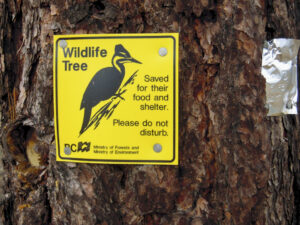 The European Court of Justice (ECJ) has issued a ruling on suspending logging to protect bird nesting sites in Estonia. However, the Ministry of Climate and forestry industry representatives interpret the ruling in opposing ways, each claiming their stance is the right one. The final decision on the matter is set to be made in the autumn by the Estonian Supreme Court, which should clarify whether current practices will be changed or not. Head of the Ministry of Climate’s Biodiversity Protection Department, Timo Kark, said overall the ECJ considered the suspension of logging to be justified. “In the opinion of the European Court, the birds directive must be interpreted such that its provisions apply to all bird species, including those that are not protected. So any activity that may result in birds being killed, such as logging during the spring-summer nesting period, can be suspended,” Kark said.
The European Court of Justice (ECJ) has issued a ruling on suspending logging to protect bird nesting sites in Estonia. However, the Ministry of Climate and forestry industry representatives interpret the ruling in opposing ways, each claiming their stance is the right one. The final decision on the matter is set to be made in the autumn by the Estonian Supreme Court, which should clarify whether current practices will be changed or not. Head of the Ministry of Climate’s Biodiversity Protection Department, Timo Kark, said overall the ECJ considered the suspension of logging to be justified. “In the opinion of the European Court, the birds directive must be interpreted such that its provisions apply to all bird species, including those that are not protected. So any activity that may result in birds being killed, such as logging during the spring-summer nesting period, can be suspended,” Kark said. Recent research
Recent research
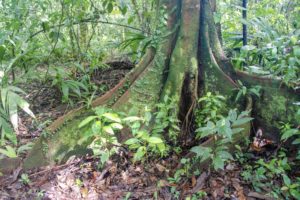 In its report “
In its report “ New research highlights concern from across Scotland about the role of industrial forestry corporations and asset management organisations who increasingly dominate the ownership and management of Scotland’s forests. The research concludes that more community ownership and management of woodlands, and more diverse ownership of forests across Scotland would increase community wealth and lead to greater environmental benefits, as well as producing more actively managed forests in Scotland. Three new discussion papers … analyse the effectiveness and impact of industrial forestry on local areas as well as for meeting national carbon and timber targets. Industrial forestry refers to predominantly single species, mostly unmanaged, Sitka Spruce forest, contrasting with more climatically resilient, sustainable, mixed species forestry. The papers recognise that, while mixed productive forestry has an important part to play in reaching Net Zero and delivering economic and social opportunities, basic assumptions about the benefits of industrial forestry can be questionable.
New research highlights concern from across Scotland about the role of industrial forestry corporations and asset management organisations who increasingly dominate the ownership and management of Scotland’s forests. The research concludes that more community ownership and management of woodlands, and more diverse ownership of forests across Scotland would increase community wealth and lead to greater environmental benefits, as well as producing more actively managed forests in Scotland. Three new discussion papers … analyse the effectiveness and impact of industrial forestry on local areas as well as for meeting national carbon and timber targets. Industrial forestry refers to predominantly single species, mostly unmanaged, Sitka Spruce forest, contrasting with more climatically resilient, sustainable, mixed species forestry. The papers recognise that, while mixed productive forestry has an important part to play in reaching Net Zero and delivering economic and social opportunities, basic assumptions about the benefits of industrial forestry can be questionable. The forest products industry is an important part of the European economy and a crucial pillar for the transition to a low-carbon economy in the future. At the same time, this sector is not immune to trade uncertainty and geopolitical risks. As Europe looks to rely more on its own resources, there is an opportunity to better utilise the continent’s forests through investment and active management. …Although the EU has just 5% of the world’s forests, it produces approximately 20% of the world’s roundwood each year. Over the past decade, the EU has gone from being a net importer of roundwood and fuelwood to a net exporter – with the EU’s net trade surplus reaching 15.4m sqm in 2023. …Despite unpredictable trade flows… Research indicates that total demand for wood fibre in the EU will grow by 25% between now and 2050.
The forest products industry is an important part of the European economy and a crucial pillar for the transition to a low-carbon economy in the future. At the same time, this sector is not immune to trade uncertainty and geopolitical risks. As Europe looks to rely more on its own resources, there is an opportunity to better utilise the continent’s forests through investment and active management. …Although the EU has just 5% of the world’s forests, it produces approximately 20% of the world’s roundwood each year. Over the past decade, the EU has gone from being a net importer of roundwood and fuelwood to a net exporter – with the EU’s net trade surplus reaching 15.4m sqm in 2023. …Despite unpredictable trade flows… Research indicates that total demand for wood fibre in the EU will grow by 25% between now and 2050. 
 Proposed changes to the EU deforestation law supported by a majority of member states will boost the potential for illegal trade of Russian and Belarusian timber, according to an NGO. In May 18 EU member states sent a letter to the European Commission proposing to simplify the EU Deforestation Regulation, the bloc’s legislation that aims to reduce the EU’s impact on global deforestation. …The European Commission decided to postpone its implementation to 30 December 2025. …The regulation boosts controls over illegal imports of timber by introducing more mandatory border checks and compulsory geolocation of timber. …“For so-called ‘no-risk’ countries, they would be exempt from geolocation requirements, and there would also be no obligation for authorities to carry out a minimum number of checks on those countries,” Ganesh said. …“NGOs have shown that wood, not just from Russia, but also from other high-risk tropical countries and deforestation hotspots, is regularly laundered through countries like China.
Proposed changes to the EU deforestation law supported by a majority of member states will boost the potential for illegal trade of Russian and Belarusian timber, according to an NGO. In May 18 EU member states sent a letter to the European Commission proposing to simplify the EU Deforestation Regulation, the bloc’s legislation that aims to reduce the EU’s impact on global deforestation. …The European Commission decided to postpone its implementation to 30 December 2025. …The regulation boosts controls over illegal imports of timber by introducing more mandatory border checks and compulsory geolocation of timber. …“For so-called ‘no-risk’ countries, they would be exempt from geolocation requirements, and there would also be no obligation for authorities to carry out a minimum number of checks on those countries,” Ganesh said. …“NGOs have shown that wood, not just from Russia, but also from other high-risk tropical countries and deforestation hotspots, is regularly laundered through countries like China. When we hear the terms “biodiversity crisis” and “mass extinction”, charismatic animals such as tigers, rhinos and sea turtles often spring to mind. But what about the small, inconspicuous species that play an important role in our ecosystems despite their size? Do they receive the attention and protection they need? Mosses may seem insignificant, but they form a rich and widespread group with around 20,000 species worldwide. Despite their small size, they play an important role in many ecosystems, for example by retaining moisture, serving as carbon sinks and contributing to nitrogen fixation in forests. Yet over 30 per cent of European species are endangered or potentially endangered. Many are poorly researched and often inadequately protected.
When we hear the terms “biodiversity crisis” and “mass extinction”, charismatic animals such as tigers, rhinos and sea turtles often spring to mind. But what about the small, inconspicuous species that play an important role in our ecosystems despite their size? Do they receive the attention and protection they need? Mosses may seem insignificant, but they form a rich and widespread group with around 20,000 species worldwide. Despite their small size, they play an important role in many ecosystems, for example by retaining moisture, serving as carbon sinks and contributing to nitrogen fixation in forests. Yet over 30 per cent of European species are endangered or potentially endangered. Many are poorly researched and often inadequately protected. Recently, Meta has developed an
Recently, Meta has developed an  New research is now showing that this key carbon sink is weakening, and the decline is accelerating. A recent study published in
New research is now showing that this key carbon sink is weakening, and the decline is accelerating. A recent study published in  Choking smoke spewed by wildfires is far more dangerous than previously thought, a new study has found, with death tolls from short-term exposure to fine particulates underestimated by 93%. Researchers found that 535 people in Europe died on average each year between 2004 and 2022 as a result of breathing in the tiny toxic particles known as PM2.5 that are released when wildfires rage. Under standard methods, which assume PM2.5 from wildfires is as deadly as from other sources, such as traffic, they would have expected just 38 deaths a year. The study comes as wildfires ravage southern Europe, and new data from EU fire monitors shows that 895,000 hectares (2.2m acres) have burned so far in 2025, breaking records for this time of year. “Our paper shows the health impact for the same amount of particles is stronger for wildfire particles,” said Prof Cathryn Tonne, an environmental epidemiologist and co-author of the study.
Choking smoke spewed by wildfires is far more dangerous than previously thought, a new study has found, with death tolls from short-term exposure to fine particulates underestimated by 93%. Researchers found that 535 people in Europe died on average each year between 2004 and 2022 as a result of breathing in the tiny toxic particles known as PM2.5 that are released when wildfires rage. Under standard methods, which assume PM2.5 from wildfires is as deadly as from other sources, such as traffic, they would have expected just 38 deaths a year. The study comes as wildfires ravage southern Europe, and new data from EU fire monitors shows that 895,000 hectares (2.2m acres) have burned so far in 2025, breaking records for this time of year. “Our paper shows the health impact for the same amount of particles is stronger for wildfire particles,” said Prof Cathryn Tonne, an environmental epidemiologist and co-author of the study. Spain has sent 500 more troops to fight raging wildfires, bringing the total deployed to 1,900, as the death toll from the blazes has risen to four. On Sunday, a firefighter died after an accident during firefighting efforts when his truck fell down a steep hill, the Castile and León regional government said. Spain’s Prime Minister Pedro Sanchez expressed “sadness” and “desolation” on X at the latest death. In neighbouring Portugal, where fires are also blazing, another firefighter was killed on Sunday in a “tragic” traffic accident, President Marcelo Rebelo de Sousa said. Fires have also broken out in Greece, France, Turkey and the Balkans as a heatwave has scorched swathes of southern Europe. Several large fires are still burning in the northwest and west of Spain, where 27,000 residents are currently evacuated from their homes.
Spain has sent 500 more troops to fight raging wildfires, bringing the total deployed to 1,900, as the death toll from the blazes has risen to four. On Sunday, a firefighter died after an accident during firefighting efforts when his truck fell down a steep hill, the Castile and León regional government said. Spain’s Prime Minister Pedro Sanchez expressed “sadness” and “desolation” on X at the latest death. In neighbouring Portugal, where fires are also blazing, another firefighter was killed on Sunday in a “tragic” traffic accident, President Marcelo Rebelo de Sousa said. Fires have also broken out in Greece, France, Turkey and the Balkans as a heatwave has scorched swathes of southern Europe. Several large fires are still burning in the northwest and west of Spain, where 27,000 residents are currently evacuated from their homes. Spain is deploying a further 500 soldiers to battle wildfires that have torn through parched woodland during a prolonged spell of scorching weather, Prime Minister Pedro Sánchez said Sunday. The decision to add to the more than 1,400 troops already on wildfire duty came as authorities struggled to contain forest blazes, especially in the northwestern Galicia region, and awaited the arrival of promised aircraft reinforcements from other European countries. …Spanish national weather agency said on Saturday, the maximum temperature was 44.7 degrees Celsius in the southern city of Cordoba. …Portugal is set for cooler weather in coming days after a spate of severe woodland fires. …In Turkey, where recent wildfires have killed 19 people, parts of the historic region that includes memorials to World War I’s Gallipoli campaign were evacuated Sunday as blazes threatened homes in the country’s northwest. …Turkey has been struck by hundreds of fires since late June, with record-breaking temperatures.
Spain is deploying a further 500 soldiers to battle wildfires that have torn through parched woodland during a prolonged spell of scorching weather, Prime Minister Pedro Sánchez said Sunday. The decision to add to the more than 1,400 troops already on wildfire duty came as authorities struggled to contain forest blazes, especially in the northwestern Galicia region, and awaited the arrival of promised aircraft reinforcements from other European countries. …Spanish national weather agency said on Saturday, the maximum temperature was 44.7 degrees Celsius in the southern city of Cordoba. …Portugal is set for cooler weather in coming days after a spate of severe woodland fires. …In Turkey, where recent wildfires have killed 19 people, parts of the historic region that includes memorials to World War I’s Gallipoli campaign were evacuated Sunday as blazes threatened homes in the country’s northwest. …Turkey has been struck by hundreds of fires since late June, with record-breaking temperatures. ATHENS — Wildfires intensified across southern Europe on Wednesday with a round-the-clock battle to protect the perimeter of Greece’s third-largest city and at least three deaths reported in Spain, Turkey and Albania. Outside the Greek port city of Patras, firefighters struggled to protect homes and agricultural facilities as flames tore through pine forests and olive groves. Tall columns of flames rose behind apartment blocks on the outskirts of the city. …Spanish Prime Minister Pedro Sánchez expressed condolences after the death of a firefighting volunteer in the hard-hit Castile and León region north of the capital, Madrid, where thousands have been displaced by evacuations. In Turkey, a forestry worker was killed Wednesday while responding to a wildfire in a southern region, officials said. The Forestry Ministry said the worker died in an accident involving a fire truck that left four others injured.
ATHENS — Wildfires intensified across southern Europe on Wednesday with a round-the-clock battle to protect the perimeter of Greece’s third-largest city and at least three deaths reported in Spain, Turkey and Albania. Outside the Greek port city of Patras, firefighters struggled to protect homes and agricultural facilities as flames tore through pine forests and olive groves. Tall columns of flames rose behind apartment blocks on the outskirts of the city. …Spanish Prime Minister Pedro Sánchez expressed condolences after the death of a firefighting volunteer in the hard-hit Castile and León region north of the capital, Madrid, where thousands have been displaced by evacuations. In Turkey, a forestry worker was killed Wednesday while responding to a wildfire in a southern region, officials said. The Forestry Ministry said the worker died in an accident involving a fire truck that left four others injured. PATRAS, Greece,/MADRID – Wildfires caused by arsonists or thunderstorms and fanned by a heatwave and strong winds wreaked destruction across southern Europe on Wednesday, burning homes and forcing thousands of residents and tourists to flee. Fire has affected nearly 440,000 hectares in the eurozone so far in 2025, double the average for the same period of the year since 2006… Authorities ordered residents of a town of about 7,700 people near Patras to evacuate on Tuesday and issued new alerts on Wednesday, advising residents of two nearby villages to leave. On the Greek islands of Chios, in the east, and Cephalonia, in the west, both popular with tourists, authorities told people to move to safety as fires spread. In Spain, a volunteer firefighter died from severe burns and several people were hospitalised as state weather agency AEMET warned that almost all of the country was at extreme or very high risk of fire.
PATRAS, Greece,/MADRID – Wildfires caused by arsonists or thunderstorms and fanned by a heatwave and strong winds wreaked destruction across southern Europe on Wednesday, burning homes and forcing thousands of residents and tourists to flee. Fire has affected nearly 440,000 hectares in the eurozone so far in 2025, double the average for the same period of the year since 2006… Authorities ordered residents of a town of about 7,700 people near Patras to evacuate on Tuesday and issued new alerts on Wednesday, advising residents of two nearby villages to leave. On the Greek islands of Chios, in the east, and Cephalonia, in the west, both popular with tourists, authorities told people to move to safety as fires spread. In Spain, a volunteer firefighter died from severe burns and several people were hospitalised as state weather agency AEMET warned that almost all of the country was at extreme or very high risk of fire. At least three people have died in a scorching heatwave that is fuelling dozens of wildfires across parts of southern Europe, forcing thousands of people from their homes. Red heat alerts have been issued in parts of Italy, France, Spain, Portugal and the Balkans, warning of significant risks to health as temperatures push above 40C (104F). Spain’s weather service Aemet said temperatures could reach 44C (111.2F) in Seville and Cordoba, while southern Portugal could also hit 44C. In Spain, an equestrian centre employee died after suffering severe burns in Tres Cantos, near Madrid, where winds over 70km/h (43mph) drove flames near homes, forcing hundreds to flee. In Spain’s north-western region of Castile and Leon, almost 4,000 people were evacuated and more than 30 blazes were reported. Another 2,000 people were evacuated from hotels and homes near the tourist hotspot of Tarifa. …In neighbouring Portugal, firefighters battled three large wildfires.
At least three people have died in a scorching heatwave that is fuelling dozens of wildfires across parts of southern Europe, forcing thousands of people from their homes. Red heat alerts have been issued in parts of Italy, France, Spain, Portugal and the Balkans, warning of significant risks to health as temperatures push above 40C (104F). Spain’s weather service Aemet said temperatures could reach 44C (111.2F) in Seville and Cordoba, while southern Portugal could also hit 44C. In Spain, an equestrian centre employee died after suffering severe burns in Tres Cantos, near Madrid, where winds over 70km/h (43mph) drove flames near homes, forcing hundreds to flee. In Spain’s north-western region of Castile and Leon, almost 4,000 people were evacuated and more than 30 blazes were reported. Another 2,000 people were evacuated from hotels and homes near the tourist hotspot of Tarifa. …In neighbouring Portugal, firefighters battled three large wildfires.
 France’s biggest wildfire this summer was spreading quickly Wednesday in a Mediterranean region near the Spanish border after leaving one person dead, authorities said. The fire had burned an area larger than Paris. About 2,000 firefighters and several water bomber aircraft battled the blaze that broke out Tuesday afternoon in the village of Ribaute in the Aude region, a rural, wooded area that is home to wineries. The fire, which has burned 13,000 hectares (32,000 acres), remained ‘’very active” on Wednesday, the local administration said in a statement. The weather was hot, dry and windy, making it difficult for firefighters to contain the blaze. One person died in their home, and at least 13 others were injured, including 11 firefighters, local authorities said. One person who was initially described as missing has been located and is safe.
France’s biggest wildfire this summer was spreading quickly Wednesday in a Mediterranean region near the Spanish border after leaving one person dead, authorities said. The fire had burned an area larger than Paris. About 2,000 firefighters and several water bomber aircraft battled the blaze that broke out Tuesday afternoon in the village of Ribaute in the Aude region, a rural, wooded area that is home to wineries. The fire, which has burned 13,000 hectares (32,000 acres), remained ‘’very active” on Wednesday, the local administration said in a statement. The weather was hot, dry and windy, making it difficult for firefighters to contain the blaze. One person died in their home, and at least 13 others were injured, including 11 firefighters, local authorities said. One person who was initially described as missing has been located and is safe. 
 Turkey faced a “very risky week” for wildfires, an official said Monday, as blazes across parts of southeast Europe and the Balkans damaged homes and led to a huge firefighting operation that included evacuations. Nearly 100 people face prosecution over the fires in Turkey. Blazes erupted near Bursa, Turkey’s fourth-largest city, over the weekend. A wildfire to the northeast of Bursa had been largely extinguished, but one to the south of the city continued, although its intensity had been “significantly reduced,” Forestry Minister Ibrahim Yumakli told reporters in Ankara. He also said that a fire that has been burning for six days in Karabuk, in northwest Turkey, had also “been reduced in intensity,” and a blaze in Karamanmaras in the south had largely been brought under control.
Turkey faced a “very risky week” for wildfires, an official said Monday, as blazes across parts of southeast Europe and the Balkans damaged homes and led to a huge firefighting operation that included evacuations. Nearly 100 people face prosecution over the fires in Turkey. Blazes erupted near Bursa, Turkey’s fourth-largest city, over the weekend. A wildfire to the northeast of Bursa had been largely extinguished, but one to the south of the city continued, although its intensity had been “significantly reduced,” Forestry Minister Ibrahim Yumakli told reporters in Ankara. He also said that a fire that has been burning for six days in Karabuk, in northwest Turkey, had also “been reduced in intensity,” and a blaze in Karamanmaras in the south had largely been brought under control.